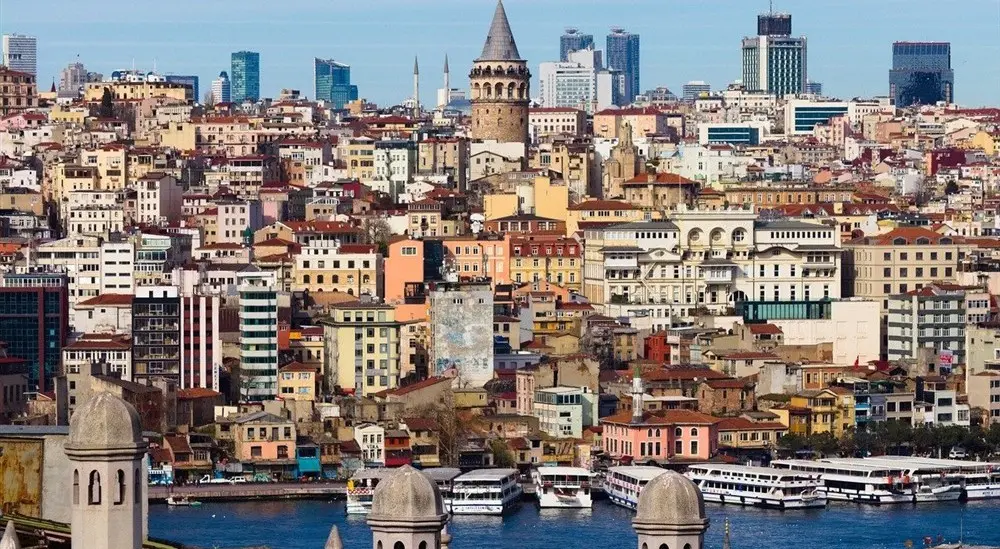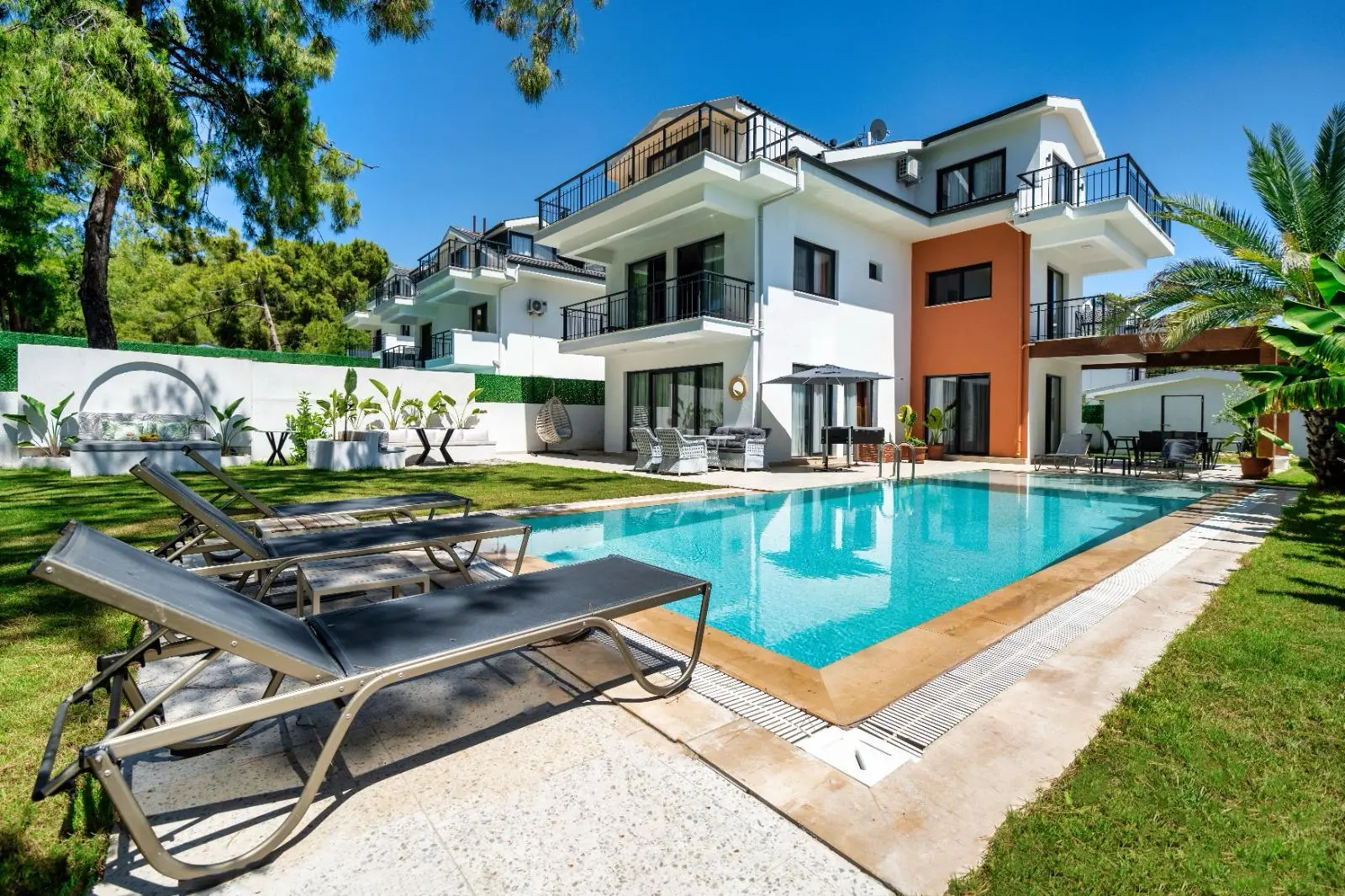Istanbul, a city in Turkey that is a high-rolling global metropolis, ranks alongside the likes of Rome, Milan, Paris, and New York. Its title as Turkey's busiest city sees millions of tourists descend on it every year. Previously, the history includes tumultuous years, but these days, it is more peaceful, and a bustling hub of tourism business, education, arts, culture, fashion and food. The city is Turkey’s most populated metropolis, so what does anyone visiting for the first time need to see, and where are the best places? Let’s find out.

About Istanbul City in Turkey
Brief History From Byzantium
Istanbul’s history spans over 2,600 years. Originally founded as Byzantium by Greek settlers from Megara around 660 BCE, the city rose in prominence due to its strategic position on the Bosporus Strait. In 330 CE, Roman Emperor Constantine the Great re-founded the city as Nova Roma, soon known as Constantinople, and established it as the capital of the Eastern Roman Empire (later the Byzantine Empire). Throughout the Byzantine period, Constantinople became a centre of Orthodox Christianity, culture, and commerce, with its population estimated to exceed 500,000 by the 10th century, making it the largest city in Europe at the time.
In 1453, the city fell to the Ottoman Empire under Sultan Mehmed II, marking the end of the Byzantine Empire and the beginning of a new era. Renamed Istanbul, the city became the imperial capital of the Ottomans for nearly 470 years, flourishing as a centre of Islamic culture, trade, and administration. Following the fall of the Ottoman Empire in 1923, the capital moved to Ankara, but it remained Turkey’s largest city for Turkish people.
General Facts and Figures
Location: Istanbul sits on two continents, the Asian and European. Surrounded by the Marmara and the Black Sea, the city features the Bosphorus, an important strait of water, over which several empires have fought for control. The Istanbul province covers 6,220 square kilometres, at the northwestern tip of Turkey.
Demographics: The population of 18 million makes Turkey the busiest city. The ethnic and religious diversity of citizens has been a core theme throughout its history, and these days, foreigners of various nationalities live there.
Economy: Generating 30% of Turkey's GDP, and as the country's largest industrial and export centre, it enjoys worldwide international fame. Primary business regions include Levant and Maslak and the Asian financial centre.
Climate: The Mediterranean climate falls into the Csa Koppen classification system. However, its location and enormous size make it borderline, so certain parts experience high humidity. Summer temperatures average 30 degrees, while Istanbul experiences cold winters, heavy rainfall, and snow from January to March.
Istanbul Airports For Global Travellers
The European Istanbul Airport (IST) is the primary and largest airport. It offers direct flights to over 300 destinations worldwide, supporting both tourism and international business activity. Sabiha Gökçen International Airport (SAW) caters to low-cost carriers and regional traffic and is undergoing continual expansion. These two well-connected airports attract global travellers and enhance the value of nearby real estate, especially for investors targeting rental yields and short-term tourism accommodation.

Famous Bridges Connecting the Two Continents
Istanbul is famously connected by several key bridges that span the Bosporus Strait, linking the European and Asian sides. The 15 July Martyrs Bridge (formerly the Bosphorus), opened in 1973, was the first to connect the two continents. The Fatih Sultan Mehmed Bridge, known as the Second Bosphorus Bridge, was completed in 1988 and is located further north.
The Yavuz Sultan Selim, or Third Bosphorus Bridge, opened in 2016 and is the widest in the world, accommodating rail and motor traffic. Across the Golden Horn, notable bridges include Galata, which is famous for the lower deck of restaurants; the Atatürk Bridge; the Golden Horn Metro Bridge, a cable-stayed bridge serving the metro line; and the Haliç Bridge, which carries the ring road.
Cruising the Bosphorus Strait
The Bosphorus Strait, a narrow, natural waterway, stretches approximately 30 kilometres (19 miles), separating the European and Asian sides while connecting the Black and Marmara seas. At its narrowest point, it measures just 700 metres across and is a strategic maritime passage. Historically and geopolitically vital, the Bosphorus has served as a crucial trade route for centuries, controlling naval access between Russia, Eastern Europe, and the Mediterranean.
It remains a major international shipping lane for manufacturing in Turkey, with over 40,000 vessels passing through annually. In addition to its commercial importance, the Bosphorus is lined with picturesque waterfront neighbourhoods, Ottoman-era palaces, and iconic landmarks, offering valuable and sought-after real estate.

Sultanahmet Square – Tourist Hub
Sultanahmet Square, in the heart of the historic peninsula, is the former Hippodrome of Constantinople during the Byzantine era. This iconic square is surrounded by renowned landmarks, including the Blue Mosque, Basilica Cistern, and Topkapi Palace, attracting millions of visitors each year. The surrounding old walls are an attraction.
Rich in history and symbolism, Sultanahmet was the political and ceremonial centre of the Byzantine and Ottoman Empires. Today, this area is a hub for cultural preservation, religious heritage, and international tourism. The area features museums, traditional Ottoman fountains, and landscaped gardens, in a single walkable zone. Its central location and dense concentration of heritage make it an essential stop for anyone exploring deep historical roots.
Taksim Square and Istiklal Avenue
Taksim Square and İstiklal Caddesi are among the most vibrant and iconic landmarks, serving as the cultural and social heart of the city. Taksim Square, a large public space, often hosts political events, celebrations, and protests, and features the Republic Monument. Leading from the square, İstiklal Caddesi, a bustling pedestrian street stretching 1.4 kilometres, lined with historical buildings, shops, cafes, art galleries, and theatres, is popular with both locals and tourists. The street is rich in cultural history, with its trams adding a nostalgic charm, and it comes alive with street performers, music, and a variety of international and Turkish brands.

Most Famous Tourist Attractions and Historical Sites
The European part features iconic tourist attractions and historical sights, concentrated in the historic peninsula of Sultanahmet. Chief among them is the Hagia Sophia, a UNESCO World Heritage Site built initially as a Byzantine cathedral in 537 CE and later converted into a mosque, then a museum, and now functioning again as a mosque.
Nearby is the Blue Mosque (Sultan Ahmed Mosque), known for its six minarets and exquisite blue Iznik tiles. Just steps away lies the Topkapi Palace, the opulent residence of Ottoman sultans for nearly 400 years, which now houses imperial collections, sacred relics, and stunning courtyards. The Basilica Cistern, an ancient underground water reservoir built in the 6th century, offers a mysterious and atmospheric experience just beneath the streets of Sultanahmet.
Outside the old part, Taksim Square in the Beyoğlu district is in proximity to İstiklal Avenue and has access to cultural sites like the Atatürk Cultural Centre. The Galata Tower in the nearby Galata neighbourhood provides panoramic views and dates back to the 14th century. Along the Bosphorus, tourists flock to Dolmabahçe Palace in Beşiktaş, an extravagant 19th-century imperial residence, and to the Ortaköy Mosque, which offers stunning views. On the opposite Asian side, Çamlıca Hill offers sweeping vistas and the new Çamlıca Mosque.

Green Parks for Relaxation
This beautiful city includes various green parks for peaceful escapes from the hustle and bustle, perfect for both relaxation and outdoor activities. Gezi Park, near Taksim Square, is known for lush landscapes, cultural events, and a vibrant atmosphere. European Emirgan Park, nestled along the Bosphorus in Emirgan, offers expansive green spaces, picturesque ponds, and a stunning array of tulips in spring.
Yildiz Park, near the Beşiktaş district, features wooded areas, walking paths, and beautiful Ottoman-era pavilions. Çamlıca Hill, the highest point, provides panoramic views with a large park perfect for picnics and leisurely walks. Additionally, Fenerbahçe Park, located by the Sea of Marmara in Kadıköy, offers a tranquil seaside atmosphere with vast green areas, ideal for outdoor activities and sports. These parks provide a much-needed oasis, blending nature with urban energy.

From Bazaars to Shopping Malls
The most famous bazaar, the Grand Bazaar (Kapalıçarşı) in Beyazıt, features over 4,000 shops selling everything from handmade carpets and jewellery to ceramics and leather goods. Nearby, the Spice Bazaar (Mısır Çarşısı) in Eminönü earns fame for the array of spices, sweets, teas, and Turkish delicacies.
For modern shopping, Istinye Park in Sarıyer offers a luxurious retail experience with international brands, fine dining, and open-air spaces. Akasya Mall in Asian Üsküdar and Emaar Square Mall in Ümraniye blend global labels with Turkish fashion, entertainment, and gourmet markets. In the centre, Zorlu Centre and Kanyon Mall in Levent cater to high-end shoppers, combining upscale boutiques with theatres and cultural venues.

Areas of Asian Istanbul
Asian Istanbul, home to approximately 4–5 million residents, offers a more residential, spacious, and green alternative to the bustling European side, while still playing a vital role in the economy and culture. Key districts like Kadıköy, Üsküdar, the Ataşehir business district and Bagdat Avenue serve as major commercial and cultural hubs. Kadıköy is known for vibrant markets, nightlife, and arts scene, while Üsküdar is rich in Ottoman architecture and waterfront mosques.
Ataşehir has rapidly developed into a financial centre, especially with the establishment of the International Finance Centre (IIFC), which opened in 2023 and is expected to house over 50,000 workers upon full operation. Served by Sabiha Gökçen International Airport (SAW), handling over 30 million passengers, the area benefits from modern transport links, including metro lines, Marmaray rail connections, and ferry routes, making it well-integrated. With lower population density, growing infrastructure, and rising property values, the Asian side offers strong potential for long-term residential and commercial investment.
The Asian side includes the Prince's Islands. Buyukada, the most legendary, boasts old Ottoman mansions and traffic-free streets. Covering 25,84 square kilometres, Ataşehir breaks down into 17 neighbourhoods. Over the last ten years, foreign real estate buyers have contributed towards Ataşehir's rise in popularity. With its three-thousand-year history, Beykoz, situated at the northern end of the Bosphorus, is desirable.
As a prominent Asian district, Kadikoy's cultural scene attracts tourists and like-minded Turks. Home to the iconic Haydarpaşa train terminal, locals use its ferry port as a cheap and efficient way to get around. With a population of 700,000, Pendik's primary attribute is its proximity to Sabiha Gökçen Airport. Locals often use regular ferry services to get to out-of-city places like Yalova.
Many Turks have summer homes in Sile, which offers ideal alternatives to Mediterranean and Aegean coastal resorts. Uskudar, breaking down into 33 neighbourhoods, some stand out more than others because of tourist attractions. Beylerbeyi has an Ottoman palace of the same name, while Maiden's Tower sits in Salacak, and every day, Turks head to Kisikli to see fantastic views from Camlica Hill.

Areas in European Istanbul
The European side is the most populous and economically dynamic region, home to roughly two-thirds of the population, over 11 million. It encompasses the historic core, including Fatih and Eminönü. The business and financial heart lies further north in Şişli, Levent, and Maslak, areas known for high-rise office towers, upscale residences, and headquarters of major Turkish and international firms. The European side features Istanbul Airport (IST), with a capacity of 350 million passengers. In terms of infrastructure, the area is well-connected by metro, tram, and bus lines, with ongoing megaprojects expected to further boost real estate value and urban development.
Prominent areas include Besiktas, which features Ortakoy and its historical mosque, and the elite areas of Etiler and Levant. Beylikduzu's prestigious reputation dates back to Ottoman times, when wealthy residents retreated from the main centre to relax during summer. These days, the high number of shops and seaside environment boost its upper-class lifestyle.
Often called the new centre, Beyoglu's nightlife and shopping scenes outrank all others. It houses Istiklal Street, the longest and busiest street in Turkey, as well as prominent landmarks like the Galata Tower, Saint Anthony Padua Church, and the Taksim Independence Monument. Made up of 21 neighbourhoods, Eyup extends from the centre of European Istanbul up to the black Sea. Conservative families like Eyup because it houses famous Islamic relics and landmarks.
The historical neighbourhood of Sultanahmet sits in the Fatih district of Istanbul, Turkey. Certain parts with iconic buildings, like the Topkapi Palace, are UNESCO World Heritage sites. Eminonu, a busy seaport and location of famous landmarks like the Spice Bazaar and Galata Bridge, is within the Fatih boundary lines. Rumelihisar Castle, old yali mansions and quaint seaside villages make Sariyer a desirable location, although getting your foot on the property ladder can be expensive thanks to reflected prices.

More About Turkey
If you enjoyed this article, you will also like our blog. Discussing everything to know about Turkey, from places to people, as well as travelling and living here. From the big Istanbul city in Turkey, to the Aegean and Mediterranean coastal resorts to lesser talked about places off the beaten track, it will inspire you to get to know this beautiful country.
















 Bodrum
Bodrum  3
3  2
2 


















 X
X